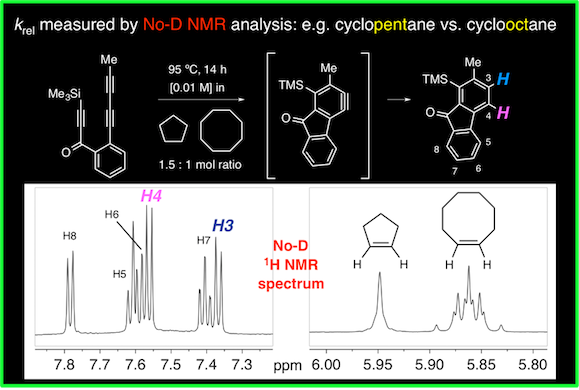Niu, D.; Willoughby, P. H.; Baire, B.; Woods, B. P.; Hoye, T. R. Nature 2013, 501, 531–534.
The removal of two vicinal hydrogen atoms from an alkane to produce an alkene is a challenge for synthetic chemists1, 2. In nature, desaturases and acetylenases are adept at achieving this essential oxidative functionalization reaction, for example during the biosynthesis of unsaturated fatty acids3, eicosanoids, gibberellins4 and carotenoids5. Alkane-to-alkene conversion almost always involves one or more chemical intermediates in a multistep reaction pathway; these may be either isolable species (such as alcohols or alkyl halides) or reactive intermediates (such as carbocations, alkyl radicals, or σ-alkyl-metal species). Here we report a desaturation reaction of simple, unactivated alkanes that is mechanistically unique. We show that benzynes are capable of the concerted removal of two vicinal hydrogen atoms from a hydrocarbon. The discovery of this exothermic, net redox process was enabled by the simple thermal generation of reactive benzyne intermediates through the hexadehydro-Diels–Alder cycloisomerization reaction of triyne substrates6. We are not aware of any single-step, bimolecular reaction in which two hydrogen atoms are simultaneously transferred from a saturated alkane. Computational studies indicate a preferred geometry with eclipsed vicinal C–H bonds in the alkane donor.
